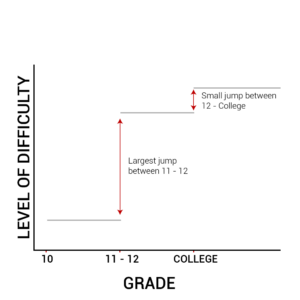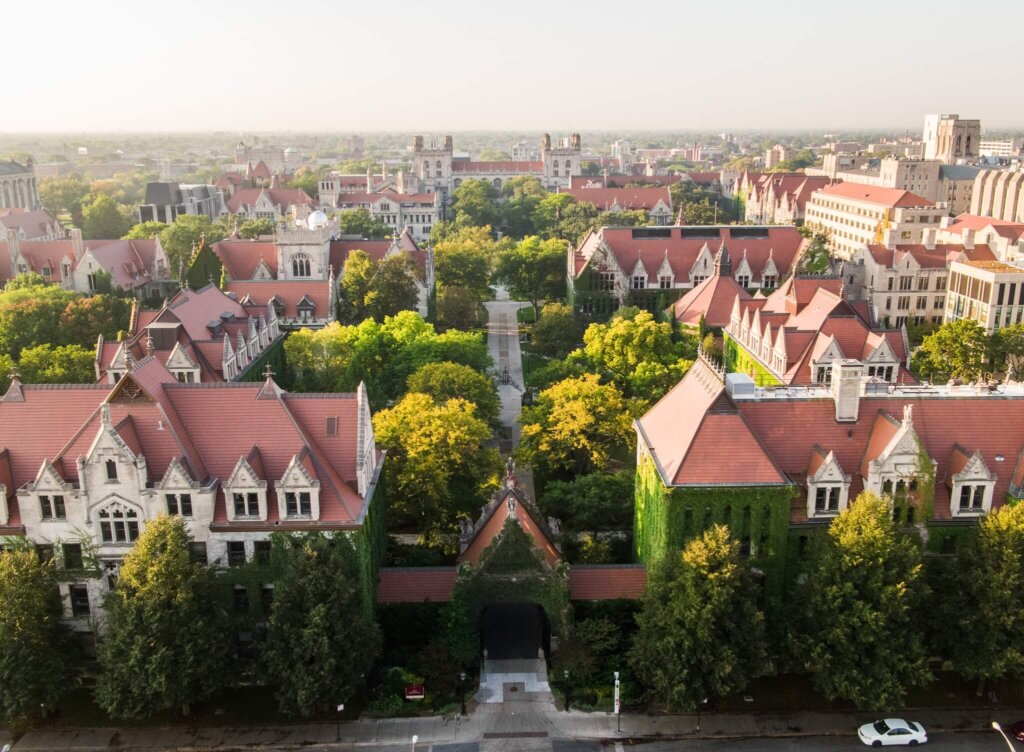Pre-College Advising • Pre-College Planning Guide
5 Factors to Consider Before Changing Your Child’s Curriculum for Grades 11 and 12
POSTED ON 09/21/2022 BY The Red Pen

Over the last two decades, India has seen significant growth in the number of schools offering international curricula, such as the International Baccalaureate Diploma Programme (IBDP), the International General Certificate of Secondary Education (IGCSE) and the Cambridge International AS & A Levels. What started with just eight international schools in 2000 has grown to over 600 schools today. This number will only increase with more schools slated to open in the next five years. Furthermore, as outlined in the new national education policy, Indian curricula are also shifting towards holistic education to keep up with their international counterparts. With so many options out there, how can you help your child choose a best-fit curriculum for grades 11 and 12?
When deciding whether to change your child’s curriculum, keep these five factors in mind:
1) Understand each curriculum:
Before you move your child to an international curriculum, you must understand it thoroughly. Each curriculum varies in teaching style, the number and range of subjects offered, the programme’s depth and more. Here is a quick summary of the differences:
| A Levels | IBDP | American High School Diploma (AHSD) | Indian Boards (CBSE and State) | |
|---|---|---|---|---|
| Number of subjects | Three to four | Six | Three to four courses per semester | Five to six |
| Subject selection options | Based on their interests, students can choose any combination. English is compulsory for Indian students for the first year. | One subject per group: English, mathematics, social science, science, second language and an elective sixth (a choice between an arts subject or an additional science/social science subject). | School-specific, but typically includes English, mathematics, lab sciences and social science. | Based on their interests, students specialise in one stream: commerce, science or arts/humanities. English is compulsory for all streams. |
| Additional components | Not mandatory. Some schools offer the Extended Project Qualification. | Extended Essay (EE), CAS and Theory of Knowledge (TOK). | No | No |
| Level of subjects | In-depth learning in all subjects. | Three at Higher Level, three at Standard Level. | Honours and APs. | All at one level |
| Exams | Typically, AS at the end of grade 11 and A Level at the end of grade 12. | All exams are at the end of grade 12. Internal assessments and EE/TOK are assessed. CAS journal must be submitted. | Assessed every semester | All exams are at the end of grade 12. Some streams might have practical exams. |
| Type of teaching | Combination of analytical and content. | Combination of analytical and content. | Combination of analytical and content. | Content heavy. |
2) Know that the jump is massive across all curricula:
No matter what you choose, you and your child should know that even students who progress through the same curriculum find a vast academic difference between grades 10 and 11. For example, if your child is studying the ICSE board and decides to continue with ISC, there will be 10 times more work in grade 11 than in grade 10. This applies to all curricula; IGCSE to A Levels, IB Middle Years Programme (MYP) to IBDP etc.
If you and your child decide it’s best to switch curricula, not only will they have to adapt to a new learning style, but they will also need to adjust to an advanced level.

3) Realise that international higher education institutions accept multiple curricula:
If you’re moving your child to an international curriculum because you believe it will increase their chances of admission to international universities, then don’t do it! Almost all international universities understand and accept grades and marks from Indian curricula. However, very few, such as the University of Cambridge require you to take additional exams, while others, such as the University of Oxford, Imperial College and University College London, only accept CBSE and ISC results but do not accept state board scores.
Studying an international curriculum is beneficial because the teaching methods are in-sync with global education standards. But it is not necessary to move your child into an international board at high school solely for this purpose. Most students who have studied Indian curricula transition to international teaching styles seamlessly when they commence university. What does matter is the subjects your child chooses within the curriculum. Have in-depth conversations with schools you are considering to understand what subjects they offer. Speaking to the subject teachers in the presence of your child is a good idea, as it will lead to a better understanding of what’s expected.
In the past decade, The Red Pen has worked with students who studied the HSC, ISC or IBDP curricula and were all admitted to Harvard University.
4) Be aware of your child’s strengths:
Is your child struggling in their current curriculum? Do you think they will benefit from a change in teaching style? Are the subjects they want to pursue available in a particular curriculum? Knowing the answers to these kinds of questions will help you make a decision.
Regarding teaching styles, Indian curricula require students to learn a vast amount of information for their final examinations, while international curricula focus on critical thinking and analysis. This does not mean your child doesn’t have to learn anything while studying in an international curriculum. They still need to know the information to make arguments and defend their answers in the IBDP, A Level and AHSD. If your child is faring well in the Indian curriculum, think twice if you want to move them. At the end of the day, data is the most important factor in the college admissions process, and a curriculum change can lead to a dip in grades. If you are considering the US for higher education, note that all marks from grades 9-12 are sent to the university. So if your child is doing well, think about whether you really want to disrupt their education. If your child is struggling with their current curriculum, a change in learning style and approach may benefit them.
5) Ascertain if this social change will benefit your child:
At the end of grade 10, students are 16-17 years old, and hormones are running high. The pressure to fit in socially is as much as the academic pressure. Changing your child’s school can be beneficial or a complete disaster. As a parent, you are the best to judge.
At The Red Pen, we’ve seen both sides to this.
In one case, a student moved from the ICSE curriculum to the IBDP at a top school in Mumbai. He thrived there and loved the competitive environment. It was due to this environment that he pushed himself and felt he was able to grow the most in his last two years of high school.
That same year, another student, who was at the top of his class in his current school, (ICSE all through grades 1-10), also moved to a prominent IB school in Mumbai. But the environment was not conducive to his growth. He felt the competition was too much and that students worked in isolation instead of supporting each other. As a result, his confidence dipped and his last two high school years were not the best experience.
As a parent, you know your child the best. Consider all the factors carefully before following the herd and switching schools. If you decide to switch curricula, take the time to understand the ethos of the new school as well. Certain schools focus more on academic success than others. If your child needs extra support, putting them in an environment where everyone else is academically thriving may kill their confidence. Speak to current students and parents of the schools you are considering to gauge whether your child will fit in or not.
If you want to understand all the different options available, schedule a one-on-one meeting with our experts. For more information, get in touch with us.





